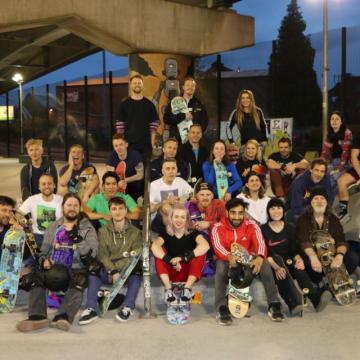Reading Hydro: A renewable energy venture, powered by the community
Case study

Discover how a group of people turned a green energy idea into reality, by raising finance through community share offers.
Reading Hydro is a community benefit society (CBS) that was set up to generate renewable, low‑carbon electricity from the power of the River Thames.
“In Reading, the river Thames drops over a 1.4-metre weir. That falling water has a lot of energy in it,” explained Anne Wheldon, Co-chair of Reading Hydro. “If you can get that energy to push a turbine and rotate it – then it can be used to generate electricity. And because the river is rain fed, it’s a renewable source of power.”
The idea came from Reading resident Tony Cowling, who began raising it with local environmental groups as far back as 2013. Initially, they set up a community interest company to secure grants and start work on the project. However, it soon became clear it would need to operate as a community benefit society.
“We currently have about 60 volunteers in teams that work on different aspects of running Reading Hydro – from clearing sluices, to maintaining the website, to running tours. We had a total of about 150 people contribute a range of skills during the development and construction of the project.”
In 2016, a core group of nine volunteers set up the CBS. Five years and three community share offers later, having raised a total of £1.2 million, Reading Hydro began generating electricity in September 2021.
“The big-ticket items we had to raise capital for were the turbines, civil engineering works, electrical systems, the electric cable – and getting the cable laid under the river to feed electricity to our customer,” Anne said.
“We needed to find a single customer nearby who would buy most of the electricity at a reasonable rate – and we were fortunate to do so. We supply our electricity to Thames Lido, an open air swimming pool with a restaurant that is on the opposite side of the river.”

Reading Hydro currently has 750 investor members who will receive interest on their investment, plus another 100 who’ve paid a £1 membership fee to have the right to vote at its AGM and have a say in the operation of the CBS.
To successfully launch and complete their share offers, the team were supported by the Community Shares Unit at Co‑operatives UK.
“We were awarded a Community Shares Booster Fund development grant that enabled us to have our business plan and share offer documents assessed and approved for the Community Shares Standard Mark,” said Anne.
“This gave a seriousness to what we were doing and it gave people confidence that we wanted to do things right. We also had the promise of equity matched investment of up to £100,000 from the Booster Fund.”
“The Booster Fund investment was a significant contribution to our capital and it gave us confidence in our business plan and share offers. It also encouraged local people to invest knowing that we had Booster Fund backing. They knew we had an external organisation supporting us.”
Engaging the local community has been a key focus of Reading Hydro – starting with building up a volunteer team and then raising investment. Engagement now includes getting local people interested in low‑carbon energy.
One way this has happened is through the interest shown in the mural on the turbine house walls. “We selected the design for this from entries to a competition in which we asked local artists to submit their ideas on how to depict electricity being generated from the power of water,” said Anne.
“That’s been a really good thing. The mural is a talking point, a way of engaging people who walk past and want to know what it is.”
After two successful years of operation, community engagement continues with talks and site tours for local schools and adults.
“There are more challenges going forward – from building the hydro plant to running it was a big organisational change. I’m pleased we’ve managed to do that, with more new people coming forward as volunteers and bringing useful skills. I’m really thrilled by what we’ve achieved.”
Find out more

About community shares

Apply to the Booster Fund

Grimsby Community Energy: saving money and saving the planet

North Kensington Community Energy: A community benefit society generating clean energy

Lambeth Community Solar: A co‑operative career springboard



